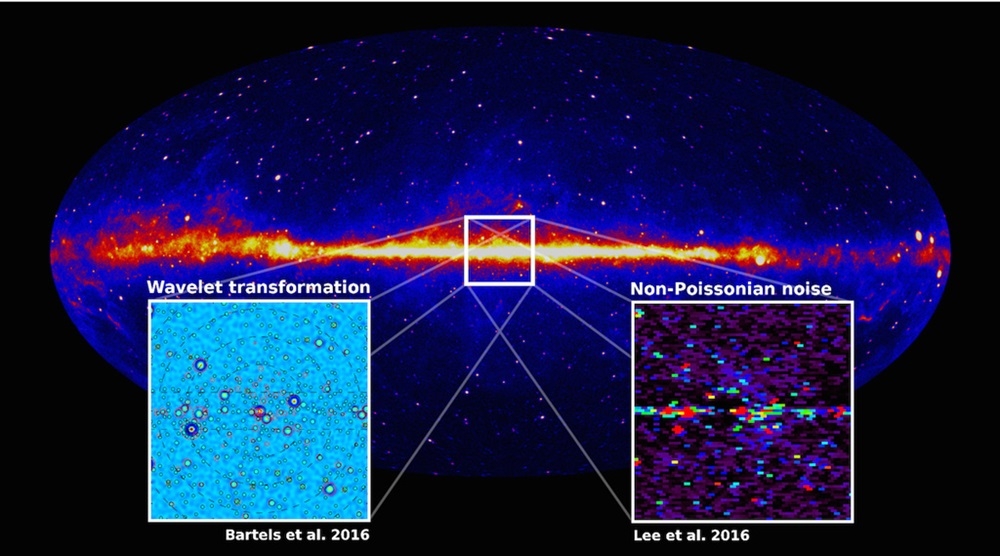Rapidly spinning stars explain dark matter signal from galactic center

Gamma ray picture of the Milky Way, as seen by the NASA Fermi satellite. Inserts: two independent statistical analyses showed that the distribution of photons is clumpy rather than smooth, indicating that the excess gamma rays from the center of our galaxy are unlikely to be caused by dark matter annihilation.
Image courtesy of Christoph Weniger, UvA , © UvA/Princeton
The excess of gamma rays from the center of the Milky Way probably originates from rapidly rotating neutron stars and not from dark matter annihilation as previously claimed.
he puzzling excess of gamma rays from the center of the Milky Way probably originates from rapidly rotating neutron stars, or millisecond pulsars, and not from dark matter annihilation, as previously claimed. This is the conclusion of new data analyses by two independent research teams from the University of Amsterdam (UvA), Netherlands, and Princeton University/Massachusetts Institute of Technology (MIT).
In 2009, observations with the Fermi Large Area Telescope revealed an excess of high-energy photons, or gamma rays, at the center of our galaxy. It was long speculated that this gamma ray excess could be a signal of dark matter annihilation. If true, it would constitute a breakthrough in fundamental physics and a major step forward in our understanding of the matter constituents of the universe.
See full text